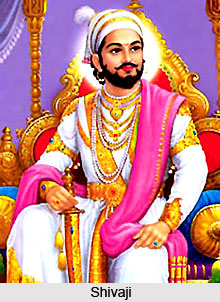 Pindaris in Indian Army were organised and about half of their numbers were usually well armed and mounted. The main weapon used by the Pindaris in Indian Army was the spear which was most efficiently used by them as light cavalry. The other half were mere camp followers and traders who were armed with assorted weapons captured, manufactured and produced in various sizes and shapes. They were not as much of a menace so as to require such large scale campaigning. However, the British Officers had to undertake separate operations which came to be known as the Pindari War.
Pindaris in Indian Army were organised and about half of their numbers were usually well armed and mounted. The main weapon used by the Pindaris in Indian Army was the spear which was most efficiently used by them as light cavalry. The other half were mere camp followers and traders who were armed with assorted weapons captured, manufactured and produced in various sizes and shapes. They were not as much of a menace so as to require such large scale campaigning. However, the British Officers had to undertake separate operations which came to be known as the Pindari War.
The Pindaris were mostly Afghan nationals leading a life of military adventure. They were sort of auxiliaries, unpaid militia or reservists with the Marathas. Even Shivaji had some of them in his army. The Pindaris in Holkar`s camp were called Holkar Shahi. In early eighteenth century Sindhia had granted them settlements in Malwa near Narmada River. They, however, maintained their separate entity by always camping away from the main Maratha forces. Their main source of income seemed to be the Pindaree bazar in which they traded with the army in foodstuffs, fodder and other essential commodities. When they operated with the Marathas in enemy territory they were allowed to pillage and plunder.
By the end of 1816 English forces were moved to strategic positions to influence the future operations. These preparations were carried on all through the summer and the autumn of 1817 and stocking of provisions and movement to these strategic outposts was finalised. The main army in the north consisted of four divisions numbering 34,000 men and horse, all regular troops. Three divisions were positioned near Agra, Kalpi and Kalinger. This force numbered 57,000 all regular troops and was divided into five divisions and a suitable reserve. The main portion of this force was to cross the River Narmada at Hoshangabad and to take up positions in Berar and Khandesh areas.
The battle of Kirkee was fought outside Pune on 5th of November, 1817. The morale of the Marathas was low with the last-minute desertions of their European commanders and were thus not in a much organised state. The Maratha Confederacy ceased to exist with the abolition of Peshwaship. During the next year continuous campaigning was undertaken in which the Maratha rulers were humbled one by one and forced to sign peace treaties. With the fall of Asigarh in March 1819 the third Maratha war came to a close. As a result of these operations not only the Pindaris were destroyed but all the Maratha rulers were also subjugated and some of their territories annexed.






